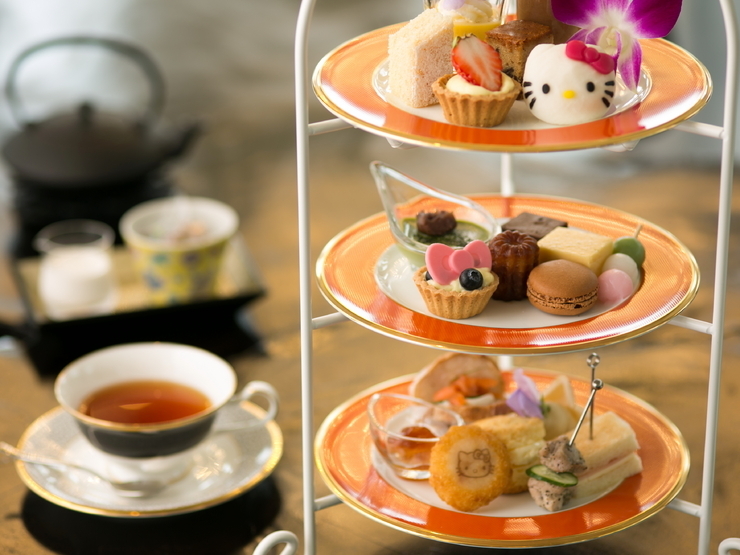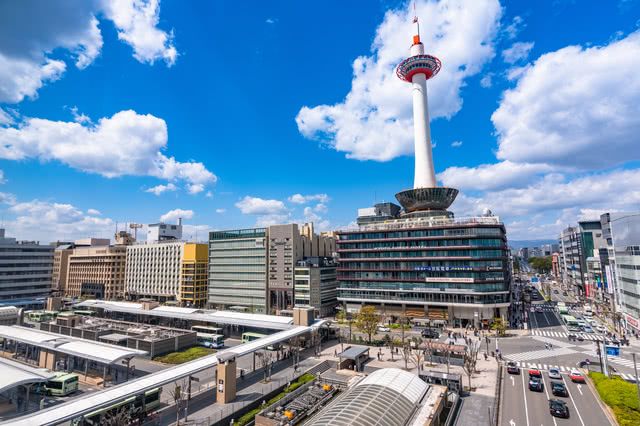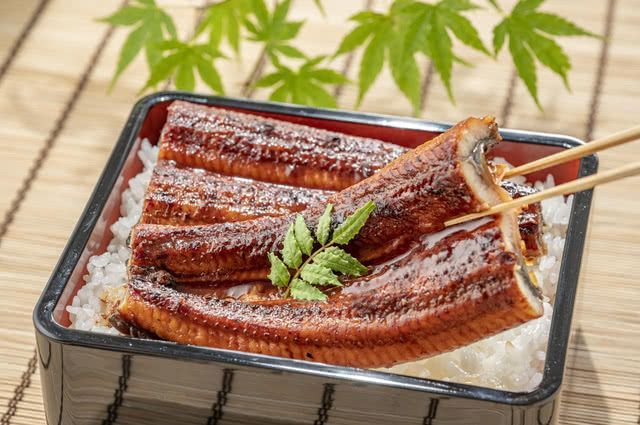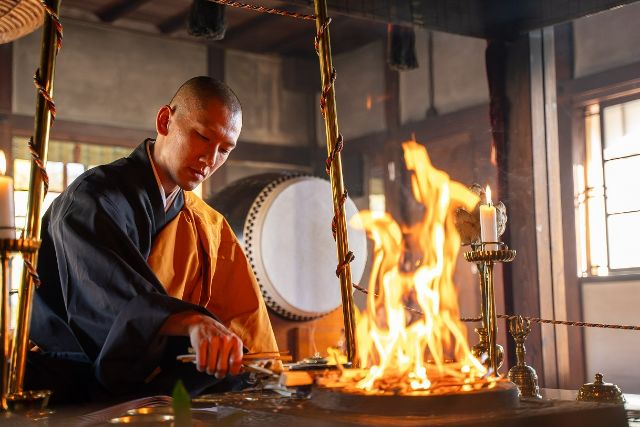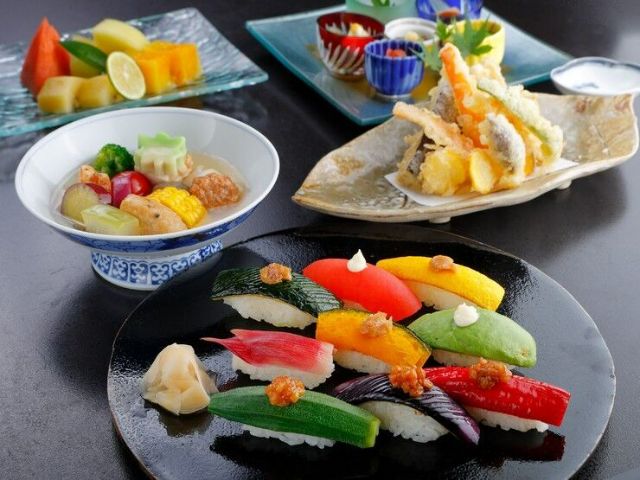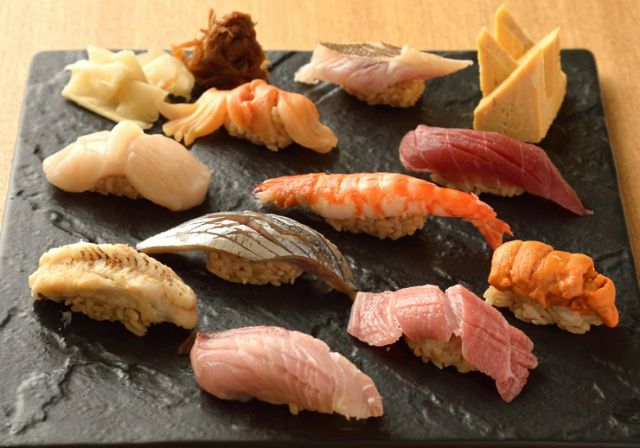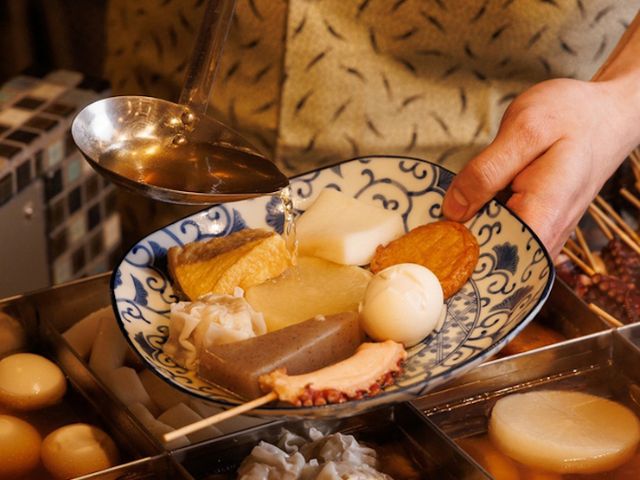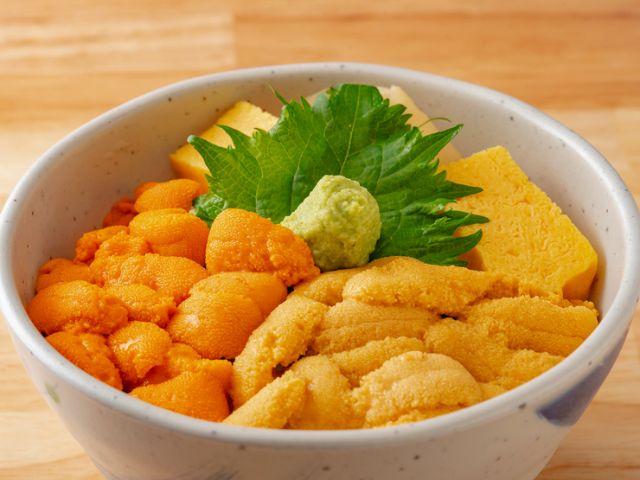Experience the Summer Traditions of Kyoto! How to Enjoy the Enchanting Kamo River Noryo-Yuka
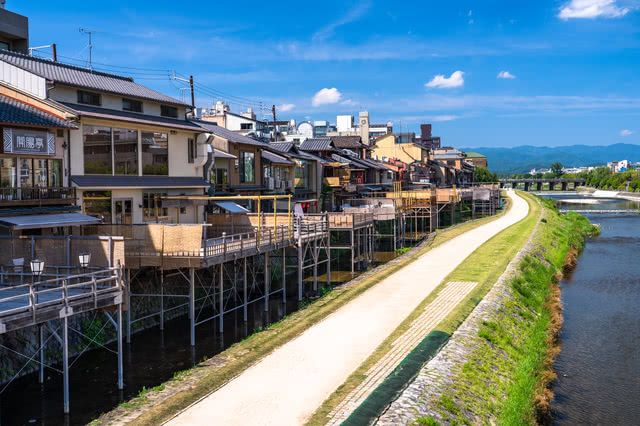
What Are Noryo-Yuka and Kawadoko?
The noryo-yuka on the Kamo River are particularly famous, but there are also two other places with similar establishments located in Kibune and Takao. Each has a unique atmosphere, and the restaurants within proudly present their own special dishes.
The Kamo River Noryo-Yuka
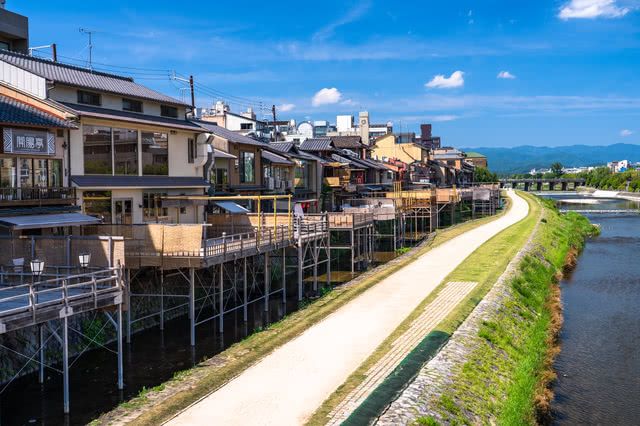
The Kamo River, which runs north to south through Kyoto City, is about 23 kilometers long. The Kamo River noryo-yuka is set up along its banks, serving as a place for the city's residents to relax. It's a much-anticipated tradition, and an iconic symbol of summer in Kyoto. They are also located just a short walk from Shijo Kawaramachi, Pontocho, and Gion, which are some of the top sightseeing districts in Kyoto, naturally attracting flocks of tourists each year.
Opening period: May 1–October 31, 2023
*Previous years ran from May 1 to the end of September. The individual opening period and lunchtime hours vary depending on the restaurant.
Kibune's Kawadoko
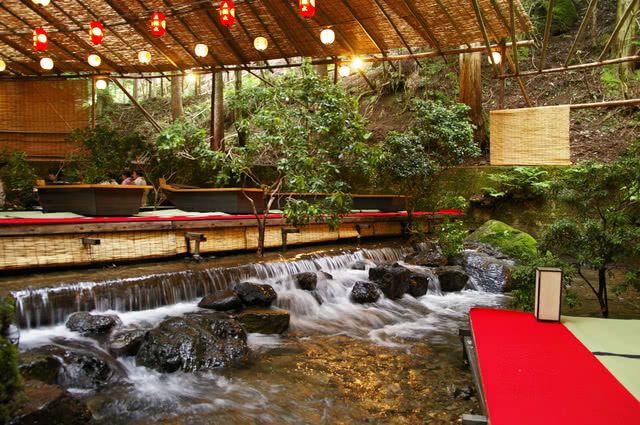
Kibune kawadoko are set up in the Kibune area, often called the inner parlor of Kyoto. Its origins date back to the Taisho era (1912–1926), starting with teahouses setting up chairs by the Kibune River for guests to cool off by dipping their feet in the water.
The Kibune area is about 10 degrees cooler than urban Kyoto, making it comfortable even in the middle of summer. Here, you can enjoy your meal amidst fresh air and crystal-clear water flowing right next to your table.
Opening period: May 1–September 30, 2023
Takao's Kawadoko
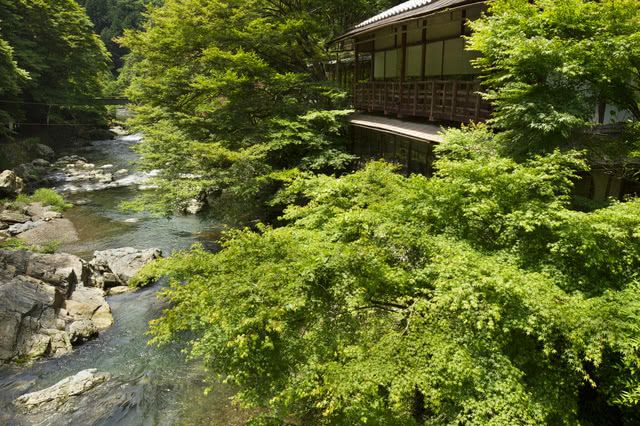
Takao kawadoko have a longer opening period than the other two. The surroundings here are abundant in greenery, and it's around 3-5 degrees cooler than Kyoto's urban areas, offering another sanctuary from the city. While listening to the babbling of the Kiyotaki River, diners can revel in the changing scenery of each season, like spring flowers, lush summer foliage, and vibrant autumn leaves.
Opening period: April 1–November 30, 2023
*Nighttime kawadoko are open until late October. The opening period varies for each restaurant.
When Did the Kamo River Noryo-Yuka Start?
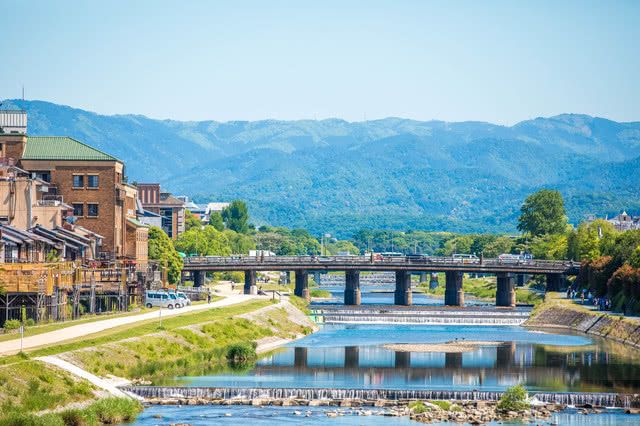
The traditions of the Kamo River noryo-yuka are said to have begun during the Momoyama period (1568–1600). After events like the rebuilding of the Sanjo and Gojo bridges by Toyotomi Hideyoshi, the riverbank of the Kamo River became a popular hangout, hosting shows and stalls. The installation of viewing seats by merchants and the construction of teahouses in response to this trend marked its early beginnings.
What Makes Them Unique?

These days, around 90 establishments, including traditional Japanese restaurants, ryokan inns, restaurants, cafes, and bars, operate on the terraces between Nijo and Gojo on the west bank of the Kamo River. The typical opening period is from May 1 to the end of September, but in 2023 it will run from May 1 to October 31.
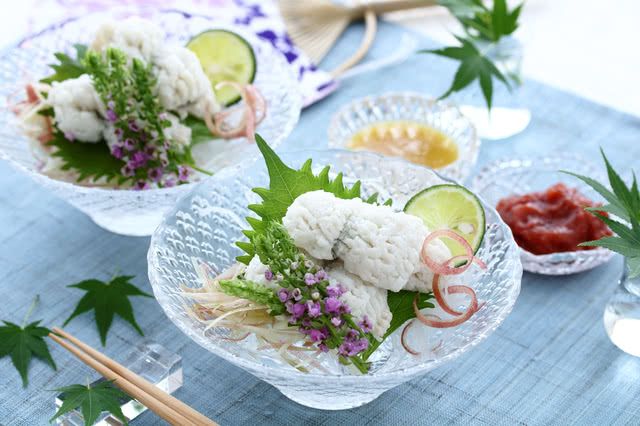
Must-try Kyoto's summer delicacies include hamo (pike conger eel) and ayu (sweetfish). Many restaurants serve dishes featuring hamo (this picture shows parboiled hamo) and ayu grilled with salt. Be sure to give them a try!
How to Enjoy the Kamo River Noryo-Yuka
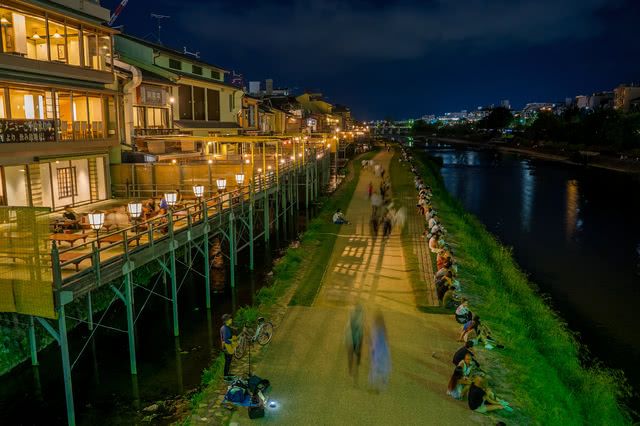
The rainy season in Kyoto typically lasts from early June to mid-July. As it often rains during these weeks, those concerned about the weather should avoid this period. The refreshing coolness of the river is best appreciated from late July to August, when the rainy season has ended and the weather becomes hot and humid. However, if you're not fond of the heat, it may be better to aim for the cooler months of May or September.
The Kamo River noryo-yuka can be enjoyed both day and night, but the sunlight can be intense in July and August, so it's much more pleasant at night during these months. With the enchanting orange lights lined up along the river and the sight of locals relaxing by the riverside, there’s nowhere better to take in the summertime vibe of Kyoto than from a noryo-yuka.
On particularly hot days, bringing a fan or uchiwa (Japanese hand fan) can help you cool down and look even more like a local. On the other hand, it can sometimes get chilly near the water, so it’s a good idea to bring an extra layer to wear over your summer clothes.
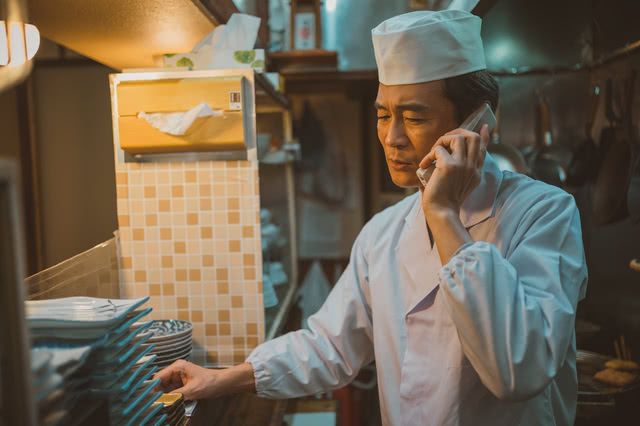
・Noryo-Yuka Etiquette
1. Noryo-yuka seats are popular, so making a reservation early is the way to go. Reservations are essential on weekends in July and August, when it tends to be busy.
2. Please refrain from canceling at the last minute in case of rain, as it inconveniences the restaurant. Indoor seating will be provided instead of the Noryo-Yuka seats.
3. Most restaurants do not have specific dress codes. However, since many come to enjoy the refined atmosphere, it is better to follow basic manners and avoid overly casual or sloppy clothing.
4. Avoid going without socks if you're dining in a Japanese restaurant with tatami rooms.
5. Even though the noryo-yuka seats are outdoors, please avoid rowdy behavior, such as talking loudly. Speak at a volume where you can still hear the river flowing to best enjoy the experience.
6. Even in restaurants where smoking is allowed, please be considerate when smoking. Avoid letting the smoke drift toward other customers, especially on windy days.
Recommended Kamo River Noryo-Yuka Restaurant Serving Kyoto Cuisine
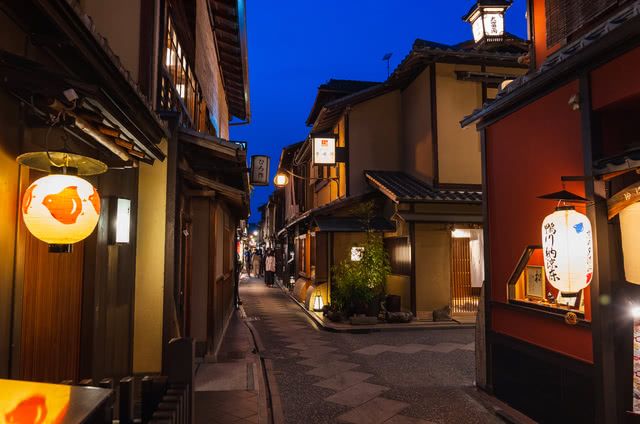
Pontochotakara (Gion-shijo / Japanese Cuisine)
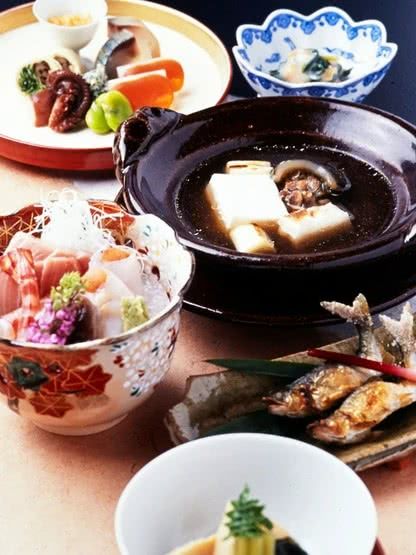
Each ingredient, including the seafood and more, is purchased fresh at the market by the owner and cooked using simple techniques with a delicate hand to bring out the natural goodness. Their signature cuisine is Kyoto kaiseki, which is refined and elegant, pleasing both the eyes and the palate. The Lunch Kaiseki Assortment (3,240 JPY) presents a casual but luxurious lunch, while the Kyoto Kaiseki Assortment (7,560 JPY) is for those looking to indulge in top-quality ingredients.
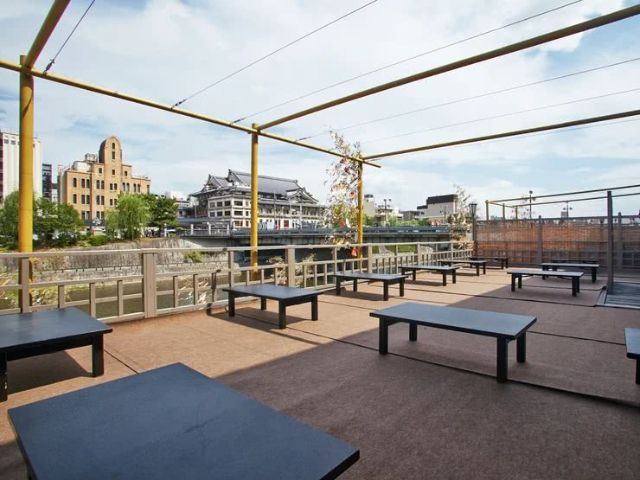
The restaurant also has private rooms for up to 12 and Japanese-style rooms for up to 30. The riverside noryo-yuka seating can accommodate up to 60 people, but because it is very popular, advanced reservations are necessary.
Pontochotakara is the perfect restaurant to discover the true traditions of summer in Kyoto.
Pontochotakara
Closed: Mondays
Average price: [Dinner] 10,000 JPY / [Lunch] 4,000 JPY
Access: 1 minute walk from Kawaramachi Station. Take Exit 1, follow along the Kamo River towards Sanjo and it will be on your right.
Address: 173-2 Pontocho-dori Shijo Agaru Kashiwaya-cho , Nakagyo-ku, Kyoto, Kyoto Map
More Details Reservation
Disclaimer: All information is accurate at time of publication.
Thank you for reading our article.
Our goal is to take your culinary journey to the next level by helping you find the best restaurant. With SAVOR JAPAN, you can search and make reservations for
the Japanese Cuisine restaurants found in and around Kyoto that fill your needs.
Discover more Japanese Cuisine restaurants by area
- Tokyo Area
- Near Tokyo
- Kyoto and Osaka Area
- Hokkaido Area
- Northern Honshu (Tohoku)
- Central Honshu (Chubu)
- Western Honshu (Chugoku)
- Shikoku
- Kyushu
- Okinawa and Ryukyu Islands
Discover more restaurants to eat Japanese Cuisine by area
Related Articles
New Articles
Categories
Cuisine
- Bars (23)
-
Japanese Cuisine (677)
- Kaiseki (46)
- Nabe (19)
- Okonomiyaki (24)
- Shabu Shabu (37)
- Soba (18)
- Sushi (137)
- Tempura (19)
- Teppanyaki (46)
- Shojin Ryori (3)
- Tonkatsu (11)
- Kushiyaki (10)
- Yakitori (44)
- Sukiyaki (35)
- Japanese Cuisine (342)
- Oyster (2)
- Sashimi/ Seafood (20)
- Unagi (eel) (31)
- Motsu Nabe (offal hotpot) (6)
- Mizutaki (chicken hot pot) (3)
- Oden (8)
- Kaisendon (seafood bowl) (9)
- Udon (2)
- Taverns(Izakaya) Cuisine (124)
- Western Cuisine (42)
- Italian/French Cuisine (95)
- Yakiniku/Steak (225)
- Chinese Cuisine (26)
- Ramen (Noodles) Cuisine (25)
- Cafe/Sweets (60)
- Other Asian Cuisine (5)
- Global/International Cuisine (7)
- Alcohol (45)
- Other (11)
Area
- Shikoku (10)
- Kyoto and Osaka (344)
-
Tokyo (458)
- Tokyo (284)
- Ginza (43)
- Roppongi (22)
- Shibuya (26)
- Shinjuku (46)
- Asakusa (20)
- Ebisu (12)
- Tsukiji (10)
- Tokyo Landmarks (4)
- Ueno (23)
- Akihabara (9)
- Ikebukuro (12)
- Jiyugaoka, Denenchofu, Nakameguro (9)
- Shimokitazawa (4)
- Kichijoji (3)
- Tachikawa (1)
- Omotesando, Harajuku, Aoyama (18)
- Akabane (1)
- Kagurazaka (4)
- Akasaka (10)
- Odaiba (1)
- Tsukishima, Harumi, Toyosu (3)
- Near Tokyo (100)
- Okinawa and Ryukyu Islands (58)
- Hokkaido (124)
- Northern Honshu (Tohoku) (31)
- Central Honshu (Chubu) (144)
- Western Honshu (Chugoku) (32)
- Kyushu (92)
Archives
- December 2025(8)
- November 2025(4)
- October 2025(3)
- September 2025(6)
- August 2025(11)
- July 2025(19)
- June 2025(18)
- May 2025(34)
- April 2025(43)
- March 2025(30)
- February 2025(36)
- January 2025(26)
- December 2024(69)
- November 2024(31)
- October 2024(15)
- September 2024(39)
- August 2024(65)
- July 2024(31)
- June 2024(54)
- May 2024(61)
- April 2024(28)
- March 2024(31)
- February 2024(42)
- January 2024(32)
- December 2023(20)
- November 2023(5)
- October 2023(11)
- September 2023(7)
- August 2023(18)
- July 2023(8)
- June 2023(8)
- May 2023(18)
- April 2023(15)
- March 2023(1)
- January 2023(1)
- April 2022(2)
- March 2022(2)
- February 2022(1)
- January 2022(1)
- July 2021(1)
- March 2021(1)
- February 2021(1)
- December 2020(1)
- October 2020(1)
- September 2020(2)
- August 2020(10)
- July 2020(6)
- June 2020(9)
- May 2020(11)
- April 2020(8)
- March 2020(8)
- February 2020(13)
- January 2020(9)
- December 2019(24)
- November 2019(8)
- August 2019(14)
- July 2019(15)
- June 2019(18)
- May 2019(17)
- April 2019(16)
- March 2019(22)
- February 2019(22)
- January 2019(26)
- December 2018(34)
- November 2018(40)
- October 2018(32)
- September 2018(11)
- August 2018(8)
- July 2018(6)
- June 2018(9)
- May 2018(10)
- April 2018(21)
- March 2018(74)
- February 2018(39)
- January 2018(26)
- December 2017(59)
Keywords
- Omakase
- Accessible
- Affordable
- All-You-Can-Eat
- Amazing Scenery
- anime
- Art
- Autumn
- Awards
- Beer Gardens
- Breakfast
- Chef Recommendations
- Cherry Blossoms
- Chinese
- Close To Station
- Condiments
- Counter
- Coupon
- Crab
- Culture
- Dassai
- Dates
- delivery
- Early Summer
- Editor's Recommendation
- English Available
- Event
- Expo
- Fall Leaves
- Family-Friendly
- Famous Restaurant
- Famous Tourist Spot
- Fast Food
- festival
- fireworks
- Flower Farm
- Free Wi-Fi
- French
- Great Location
- Guide
- Hibachi
- hotpot
- How To
- hydrangea
- Hygiene
- Illumination
- Italian
- Izakaya
- Japanese
- Japanese alcohol
- jingisukan
- Kaiseki
- Kappo
- Kushiage
- Kushikatsu
- Kyoto
- Late-Night
- Lunch
- Manners
- matsusakagyu
- Michelin
- mizutaki
- Model Course
- monjayaki
- motsunabe
- Mt.Fuji
- Multilingual Menus
- Nabe
- Narita Airport
- New Year
- Ninja
- Noodle
- Oden
- Okonomiyaki
- omotenashi
- Onsen
- Osaka
- Osaka Station
- Photogenic Site
- pizza
- PR
- Private Room
- Ramen
- ranking
- Recipe
- Regional Cuisine
- Resort
- Rice Bowl Dish (Donburi)
- sacred places
- Sake
- Sakura
- Sashimi
- sea urchin
- Setouchi Area
- Shabu Shabu
- sightseeing
- Signature Dish
- Soba
- Solo Diners Welcomed
- Spicy Food
- Spring
- Steak
- Summer
- Sunflower
- Sushi
- takeout
- Teppanyaki
- Terrace Seating
- Tokyo
- Tokyo Experiences
- Tokyo Skytree
- Tokyo Tower
- unagi
- UNESCO
- Vegan
- Vegetarian
- Wagyu
- What Popular Gourmet Sites Recommend
- Whisky
- Wine Bar
- Winter
- Wisteria
- Workshop
- World Heritage Site
- World Writers
- Yakiniku
- Yoshoku
- Yuba
- Zen
Discover Restaurants By Area
-

Tokyo Area
Japan's largest city, Tokyo, is the center of culinary culture in Japan. Countless Tokyo restaurants serve every kind of food imaginable and the Toyosu fish market keeps restaurants stocked with the nation's finest fish.
-

Near Tokyo
Coastal areas, mountains and valleys surrounding Tokyo are bursting with tourist destinations, such as hot springs and ski slopes, where many unique foods are only available locally.
-

Kyoto and Osaka Area
The cities of Kyoto and Osaka, together with their surrounding areas, have greatly influenced Japan's culinary culture since the 7th Century. The region is renowned for its entertainment, Kobe beef, and wide-ranging traditional dishes.
-

Hokkaido Area
The island of Hokkaido is home to wide-ranging produce of the finest quality, such as rice, meat, vegetables, fish and fruit. Popular dishes from Hokkaido include robatayaki (food slowly roasted on skewers) and Sapporo miso ramen.
-

Northern Honshu (Tohoku)
The northern end of Japan's main island, Honshu, is renowned for its seasonal fruit and vegetables, nation-leading harvest of fish (especially tuna from Ohma), and delicious beef from Yonezawa, Sendai and Yamagata.
-

Central Honshu (Chubu)
Chubu is in the center of Japan's main island, Honshu, and its culinary culture reflects its position between Japan's western and eastern halves. Delicious Hida beef, world-famous Mount Fuji and many acclaimed sake breweries are in Chubu.
-

Western Honshu (Chugoku)
Chugoku, on the southwest of Japan's main island, is rich with diverse produce. Many of its products are praised as Japan's best, including Matsuba crabs from Tottori and oysters from Hiroshima. Its pears and muscats are also top grade.
-

Shikoku
The mild climate of Shikoku is ideal for growing citrus fruit such as sudachi. Shikoku is also famous for Sanuki udon noodles, huge yields of tiger prawn from Ehime Prefecture and the best torafugu (tiger globefish) in the country.
-

Kyushu
Western culture was first introduced to Japan through Kyushu, Japan's third largest island, where the influence of Portuguese and other western cuisine influenced the creation of a colorful culinary tradition.
-

Okinawa and Ryukyu Islands
Okinawa, Japan’s southernmost prefecture, is a treasure trove of distinctive dishes and drinks that have become popular throughout Japan, including Okinawa soba, unique sushi toppings and Awamori distilled liquor.
